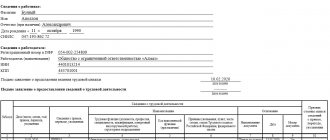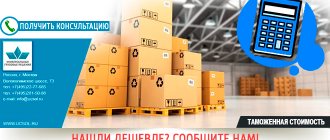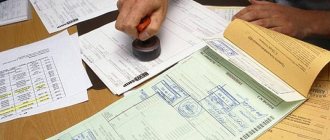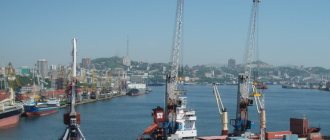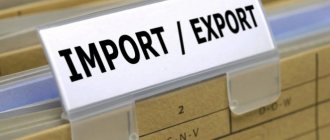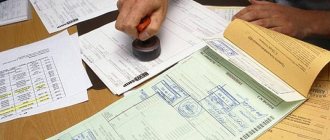Send a request for a cost estimate
You entered into a direct contract with a Chinese manufacturer and paid for the goods from your organization’s foreign currency account. Everything was done transparently and legally, so that the tax service and customs would not have questions about the legality of the transaction . However, during import customs clearance, it turned out that customs considers the goods suspiciously cheap, adjusts the customs value and requires additional customs payments.
Why are additional customs duties imposed?
Customs has a risk management system. When registering the Declaration of Goods (previously called the Customs Declaration), a program for controlling the price specified in the commercial documentation (in the invoice) begins to operate at the customs post. The program compares it with the risk profile (more details below) for this product. Simply put, the system compares the invoice price per 1 kg of net weight of the goods with benchmark indicators that are statistically derived by the Federal Customs Service (FCS). If the invoice price is lower than the price according to the risk profile, an adjustment of the customs value is assigned and a requirement is made for the payment of additional customs duties.
What is a risk profile?
Within the framework of customs legislation, each product is assigned a code of the Commodity Nomenclature of Foreign Economic Activity of the Customs Union (code of the Commodity Nomenclature of Foreign Economic Activity of the Customs Union). For each HS code, the Federal Customs Service applies a so-called risk profile management system. This system consists in the fact that, based on the statistics of imports of goods with a given HS code, the Federal Customs Service determines the “risk profile” or the price in dollars per kg of net weight of the goods. Risk profiles are orders and regulations of the Federal Customs Service, with which customs determines control indicators (dollars per kg) for each HS code. In essence, these are documents for official use, i.e. they are not available in open sources. The prices indicated in the risk profiles are guidelines, based on which the local customs authorities, where import clearance of goods is carried out, determine whether additional customs duties are required or not.
Due to the fact that Chinese goods are usually inexpensive, they are more likely than others to be subject to customs value adjustments. Let's illustrate with an example.
Example:
- Product: Car radiator;
- HS Code: 8708913509;
- Duty: 5%;
- VAT: 18%;
- Product net weight: 10000 kg;
- Price of the goods according to the supplier's invoice on FOB Shanghai terms: $10,000;
- Cost of transportation from Shanghai to the Russian border: $3000;
Customs value, i.e. The base from which customs duties, fees and VAT will be paid is the price of the goods + the cost of transport from Shanghai to the Russian border : 10,000 + 3,000 = $13,000 or $1.3 per kg.
Ideally, the importer should pay as customs duties:
- Duty: $13,000 x 5% = $650
- VAT: ($13,000 + duty $650) x 18% = $2,457.
- Customs fee: 24$
Total: 650+2457+24=3131$.
However, the risk management system comes into play. Risk profile for this product: $2 per kg. Thus, the customs service believes that the goods should cost at least $2 per kg, i.e. its customs value is calculated using the formula:
- 10,000 x 2 = $20,000.
- Duty: $20,000 x 5% = $1,000
- VAT: ($20,000 + duty $1,000) x 18% = $3,780.
- Customs fee: 24$
Total: 1000+3780+24=4804$.
As a result, the customs inspector will make demands for additional payment of customs duties in the amount of (4804-3131) = $1673.
How to prove the real value of a product?
It is necessary to collect a set of documents to confirm your contract price and provide it to customs. If you work through a customs representative (broker), as in our case, then you can collect and show supporting documents to the customs authorities in advance (even before delivery). Thus, our clients know in advance what awaits them at customs.
The customs authority reviews the documents and may require additional documents or request clarification on those previously provided. As a rule, if the documents are drawn up correctly, then the customs office accepts the contract value of the goods, does not assign an adjustment to the customs value and does not charge additional customs duties.
In some cases, the customs inspector decides to adjust the customs value and sends the importer a request to provide additional documents to confirm the value of the goods under the contract. As a result, customs duties will have to be paid in order for the goods to be released into free circulation. At the same time, having collected the correct package of documents for customs, the importer has a high chance of receiving a refund of overpaid amounts. In the worst case scenario, the customs authority may not be satisfied with the documents - the adjustment of the customs value will be considered final. Then you file a lawsuit and can receive compensation for overpaid customs duties through the court.
What documents are required to provide to confirm the price?
Basic documents confirming the real price of the goods under the contract:
- Price list of the seller-manufacturer, certified by the Chamber of Commerce and Industry of China. Must have a validity period. In this case, the validity period must coincide with the date specified in the commercial documents.
- Chinese export declaration and its translation into Russian.
- Currency transfer, Banking control statement.
- Documents on the sale of imported goods (or on previous deliveries) on the territory of the Russian Federation: Contracts, invoices, invoices, payment orders, price list for sales of goods on the domestic market).
Additional documents that will also help prove that the price in the invoice is real.
- Calculation of the cost of goods from the seller.
- Application for transportation, payment orders for payment for international transport.
- Accounting documents for the acceptance of goods for accounting.
- Offers, price lists of Russian sellers of identical (homogeneous) goods on the domestic market of the Russian Federation.
Good news! If all documents are provided without errors and customs accepted the actual value of the goods according to the invoice, then for further deliveries of this product within the framework of this foreign trade contract, the price of the goods according to the invoice will be accepted by customs without assigning additional customs payments. Thus, for subsequent deliveries, no additional payment for customs duties will be required.
Consultations on confirmation of customs value
Specialists will analyze your Foreign Trade Contracts from the point of view of the risk of adjusting the customs value and calculate the possible amount of additional customs duties, provide samples of documentation and check the set of documents to confirm the contract prices for the goods.
+7 (495) 620 96 72 +7 8 [email protected]
Request a quote
How to confirm
In these cases, the presence of papers that justify the low prices of purchased products is a prerequisite for concluding a deal. If there is no justification, the customer will not be able to sign the contract, and the participant will be considered to have evaded the conclusion.
The procedure for presenting documents with justification depends on the type of procurement procedure.
When conducting an electronic tender, the potential supplier must include a justification for the price reduced by 25% of the NMCC in the competitive application. That is, you need to collect the necessary papers in advance.
If the cost of products decreases in a similar way during the auction, then the winner sends confirmation of his offer along with the signed government contract after the auction. For example, RTS-tender suggests adding documents justifying the contract price to the “Other Documents” section.
Challenging in court
If it was not possible to prove the customs value through documents, the next stage of the dispute is the court. Judicial practice shows that most of the adjustments take place in the face of a huge number of violations.
Three main violations when adjusting customs value:
- Violation of the procedure for determining the customs value (often customs officers immediately turn to the sixth, reserve method for determining the value of goods, bypassing the five previous ones).
- Ignoring real world prices.
- Ignoring documents provided by the supplier.
The legal service of LCM Group will help you find these violations and prove their existence in the Arbitration Court. The holding’s specialists will also help you return the amounts of customs duties paid “in excess” of the declared customs value.
Please note that additional fees can be returned within three years from the date of value adjustment, even if the company has already ceased to exist. If there were many violations in the cost, LCM Group specialists will put the judicial return of funds on stream and return all costs (if all the necessary documents are available, the court will oblige the customs authorities to pay interest as well).
How can we help?
The range of legal services offered by Onlog System includes:
- Analysis of a specific situation;
- Providing the necessary advice, including at the stage of preparing the delivery, when it is still possible to avoid CTS, or at least resolve the issue without bringing it to court;
- Providing assistance in preparing a package of documents to confirm the first method of customs value, interaction with customs authorities;
- If necessary, prepare and submit a statement of claim to the court to appeal the decision of the customs authority;
- Appealing decisions on CCC to higher customs authorities.
If necessary, our company will make a security deposit or use its guarantee to cover the conditional release of goods.
When to justify the cost of products
The anti-dumping measures applied are established in Art. 37 44-FZ. A participant in the contract system who has submitted prices at least 25% less than NMCC must provide a government procurement security increased by 1.5 times, or prove its reliability in other ways. When the initial cost of GWS is more than 15 million rubles, this can only be done in cash.
Use free instructions from ConsultantPlus experts to correctly apply anti-dumping measures under 44-FZ.
In Part 9 of Art. 37 indicates what a price justification document means - papers that confirm the price offered at the auction. They are required in certain purchases when the NMCQ is reduced by at least 25%. Such confirmation is required in the procurement of goods purchased for life support:
- medicines;
- means used to provide emergency medical care in an urgent or emergency form;
- foodstuffs;
- various types of fuel.
What documents confirm the contract price?
The law does not provide strict guidelines. Article 37 states that, as justification for a reduced offer, a bidder may provide:
- A letter of guarantee from the product manufacturer with the cost and declared quantity of the product.
- Papers that confirm that the winner of the tender has the products.
- Other documents and calculations that prove the supplier’s ability to supply the required quantity of products at the proposed cost.
From this list, the future performer can choose one or several options. The law does not limit the participant in how to draw up the document. For example, as a sample justification for reducing the contract price, you can use calculations in Excel (spreadsheets).
These papers are drawn up by the participant himself in free form, if he owns the goods at the time of the purchase. If products are purchased during the execution of a contract, then you need to contact the direct manufacturer of the goods.
What is KTS?
Adjustment of customs value, in simple terms, is an increase by customs authorities of the customs value of goods in order to collect additional customs duties from a foreign trade participant. As a rule, an adjustment to customs value occurs if:
- The cost of the imported goods is below the level of the so-called risk, that is, the control indicator established by the customs authorities;
- The cost of the goods is lower than statistical data, that is, the price level at which goods of a given HS code are usually imported by other participants in foreign trade activities.
Explanations on the topic
| Main points | Document details | Download |
| On recognizing the winner of an electronic auction as having evaded concluding a contract in the event of failure to provide justification for the proposed cost of products | Letter of the Ministry of Finance No. 24-02-07/6552 dated 02/05/2018 |
About the author of this article
Vera Zharova
Other publications by the author
- 2021.10.18For beginnersWhat is a life cycle contract and its execution under 44-FZ
- 2021.09.16 Customer documents One application is participating in the auction: what should the customer do?
- 2021.08.02Purchase from a single supplierComparative table of procurement methods under 44-FZ and 223-FZ
- 2021.07.09EISRegister of unscrupulous suppliers: everything you need to know
Why is CTS needed?
The global meaning of the CCC is to ensure conditions for fair competition and complete payment of taxes and duties. Considering that customs value is the basis for calculating customs duties, and the basis for calculating customs value is the price of goods transported across the customs border, the CCC prevents situations in which counterparties would write down prices in the contract and pay a smaller amount of customs duties and VAT, thereby earning yourself a competitive advantage.
Even if a foreign trade participant actually got the goods cheaper than the average cost of similar goods on the market, he must be able to confirm the cost of the goods, otherwise adjustments cannot be avoided.
According to many participants in foreign trade activities, adjustments often arise due to the fact that, in accordance with the Federal Customs Service plan, the Russian budget must receive a certain amount of taxes, duties and fees. Against the backdrop of a reduction in trade turnover due to the complication of the economic situation in the country and the world (in particular, the reciprocal imposition of sanctions), there is a risk that in order to ensure revenues to the federal budget, customs authorities will make more and more decisions on CTS and additional charges of customs duties, including after the goods are released into free circulation.
Definition and methods of calculating the customs value of cargo. Understatement of amounts
A detailed definition and description of customs value is contained in the eighth chapter of the Customs Code of the Customs Union. According to the wording, the declared customs value of the cargo is the basis for calculating border duties.
The rules for calculating the cost are specified in the agreement between the legislative bodies of Russia, Belarus and Kazakhstan dated January 25, 2008. The official agreement is called “On determining the customs value of goods moved across the customs border of the Customs Union.”
According to the document, the customs value is calculated based on the costs incurred by the importer in the process of purchasing (production) of foreign goods and their delivery to the territory of Russia. All expenses are confirmed by invoices and receipts.
For inspection, Russian customs authorities use tables of control values for different types of goods. If the value declared in the declaration is significantly lower than indicated in the table, customs officers will make an adjustment, regardless of the reliability of the financial statements provided.
According to Russian legislation, customs officers are obliged to warn the importer about changes to the declaration, and he, in turn, is obliged to pay the missing amount of customs duties.
